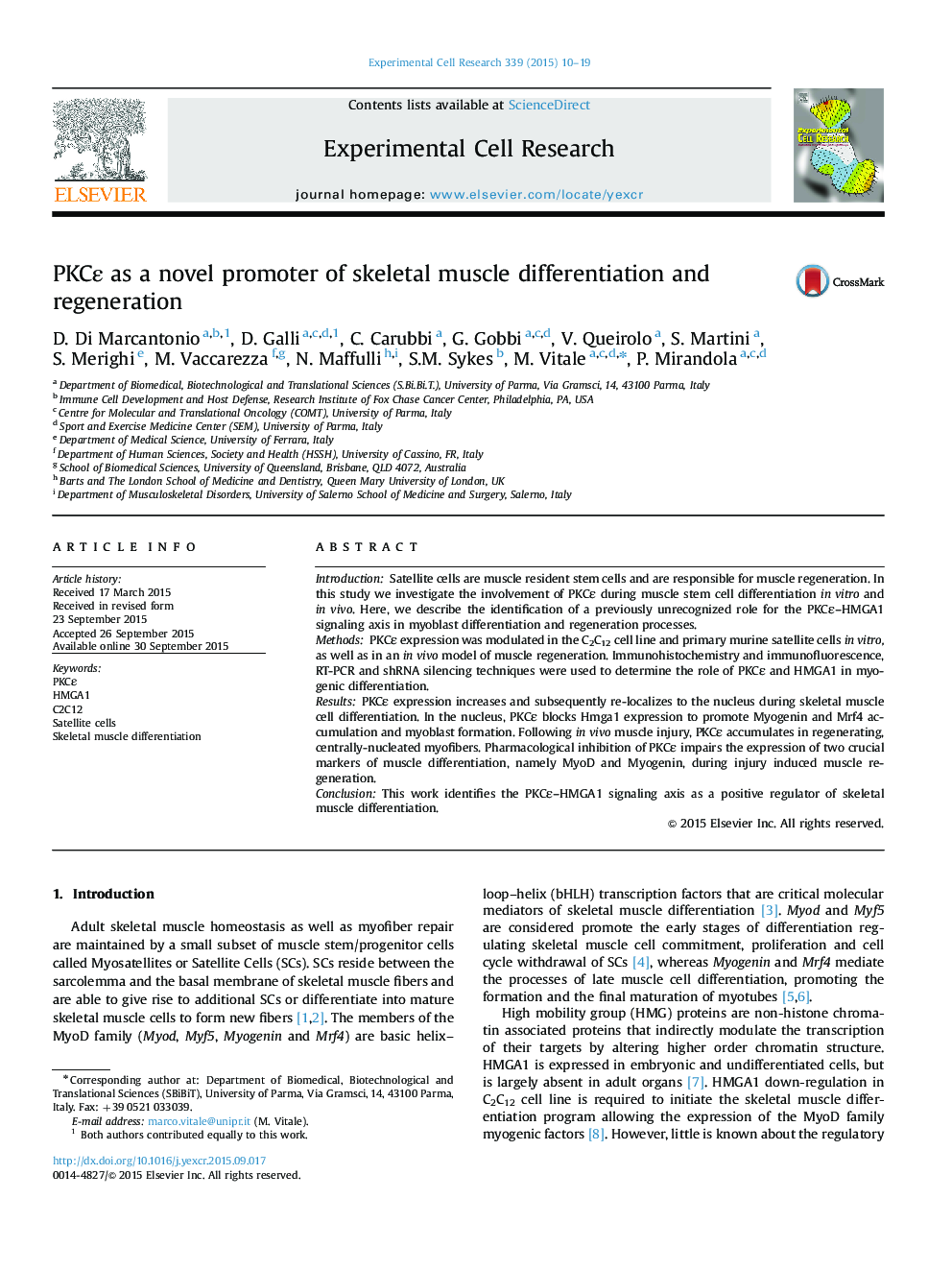| Article ID | Journal | Published Year | Pages | File Type |
|---|---|---|---|---|
| 2130082 | Experimental Cell Research | 2015 | 10 Pages |
•PKCepsilon increases during myogenic differentiation of satellite cell.•PKCepsilon blocks Hmga1 expression to promote myogenic differentiation.•In vivo pharmacological inhibition of PKCepsilon impairs skeletal muscle regeneration.
IntroductionSatellite cells are muscle resident stem cells and are responsible for muscle regeneration. In this study we investigate the involvement of PKCε during muscle stem cell differentiation in vitro and in vivo. Here, we describe the identification of a previously unrecognized role for the PKCε–HMGA1 signaling axis in myoblast differentiation and regeneration processes.MethodsPKCε expression was modulated in the C2C12 cell line and primary murine satellite cells in vitro, as well as in an in vivo model of muscle regeneration. Immunohistochemistry and immunofluorescence, RT-PCR and shRNA silencing techniques were used to determine the role of PKCε and HMGA1 in myogenic differentiation.ResultsPKCε expression increases and subsequently re-localizes to the nucleus during skeletal muscle cell differentiation. In the nucleus, PKCε blocks Hmga1 expression to promote Myogenin and Mrf4 accumulation and myoblast formation. Following in vivo muscle injury, PKCε accumulates in regenerating, centrally-nucleated myofibers. Pharmacological inhibition of PKCε impairs the expression of two crucial markers of muscle differentiation, namely MyoD and Myogenin, during injury induced muscle regeneration.ConclusionThis work identifies the PKCε–HMGA1 signaling axis as a positive regulator of skeletal muscle differentiation.
